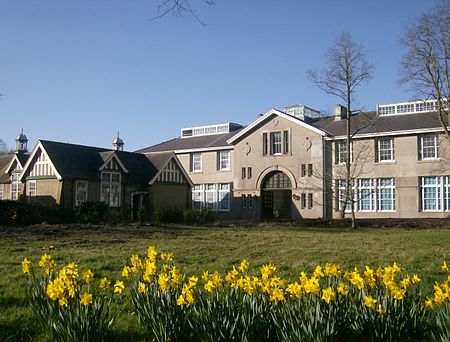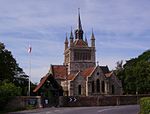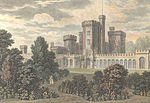East Cowes Castle, located in East Cowes, was the home of architect John Nash between its completion and his death in 1835. Nash himself was the designer of the site, and began construction as early as 1798. It was completed in 1800 and was said to have been built at unlimited expense. Nash was finally interred in the grounds.
The structure gained renown for its complex castellation, its gothic-style turrets and towers, which were built in the style of the period of Edward VI, and for the notable individuals who came to be Nash's guests there, including the Prince Regent, who went on to become King George IV and J. M. W. Turner, who painted a picture of the location.
On Nash's death, the estate was sold to the Earl of Shannon who added a lodge at the south of the estate. It was then briefly held by the politician, George Tudor, before being acquired by the Viscount Gort family, who held it until 1934.
The castle was requisitioned by the War Office during the Second World War, under whose use the condition of the building suffered greatly; and due to subsequent neglect and deterioration, the castle was finally demolished in 1963. The castle's gatehouse, North Lodge and an original icehouse survive and the castle's clock remains on display at the Carisbrooke Castle Museum.
Over the next thirty years, housing developments were built over the estate. The estate used to cover the area now bordered by Old Road, New Barn Road, York Avenue and Castle Street.Although East Cowes Castle no longer exists, there is an exact copy of the original castle called Lough Cooter Castle, near Gort, County Galway. For the circumstances concerning its creation, see the paragraph below.









